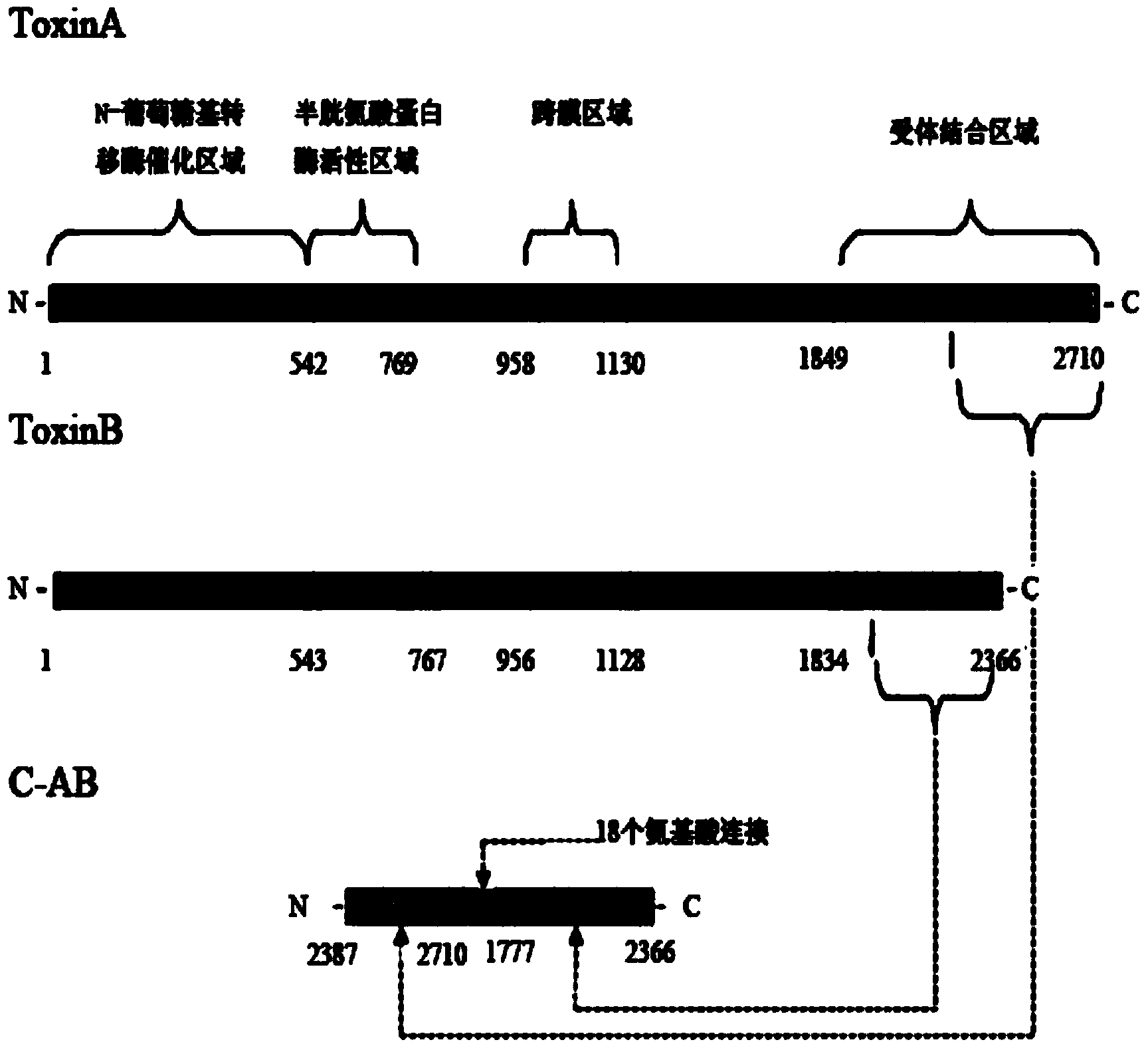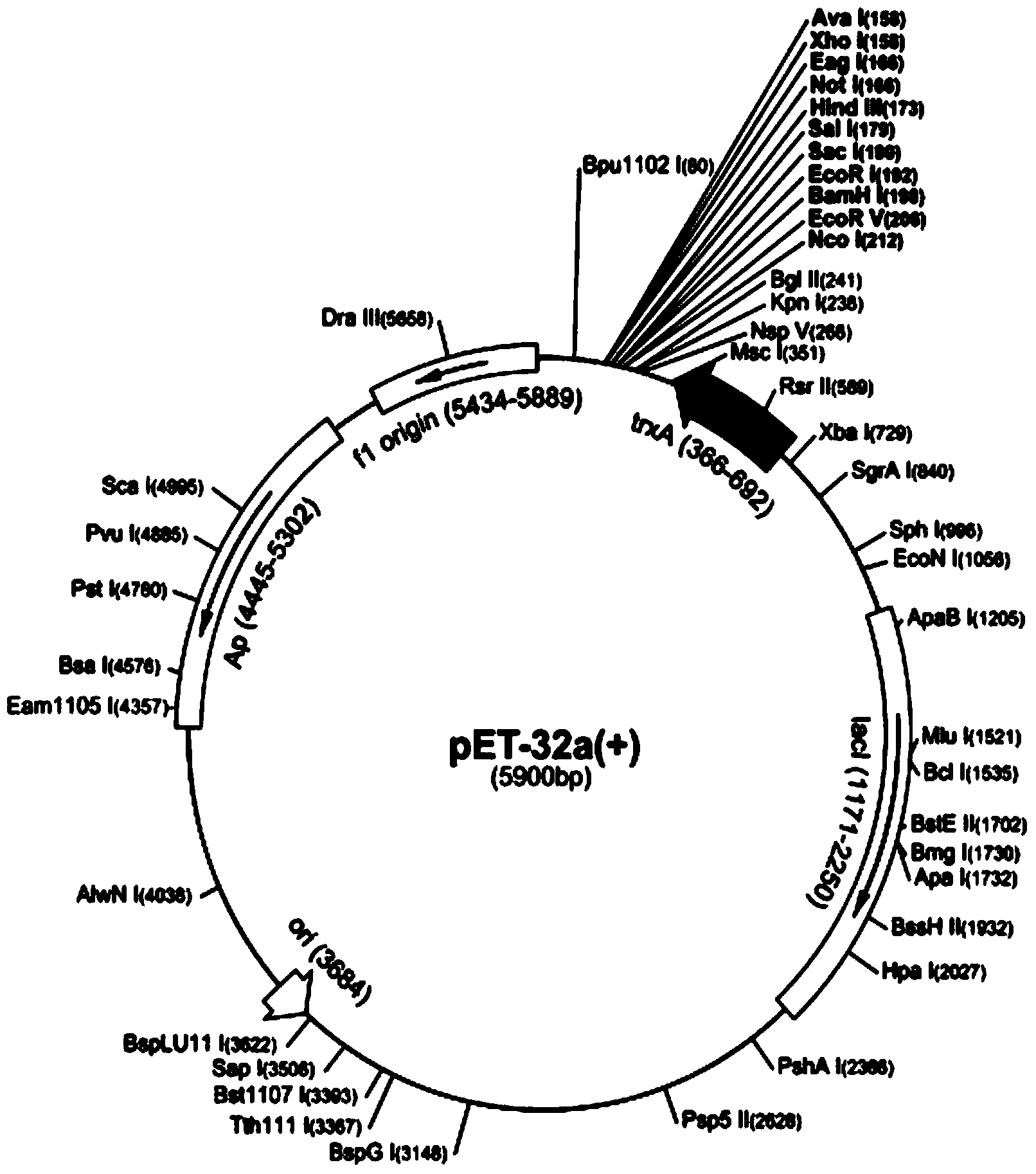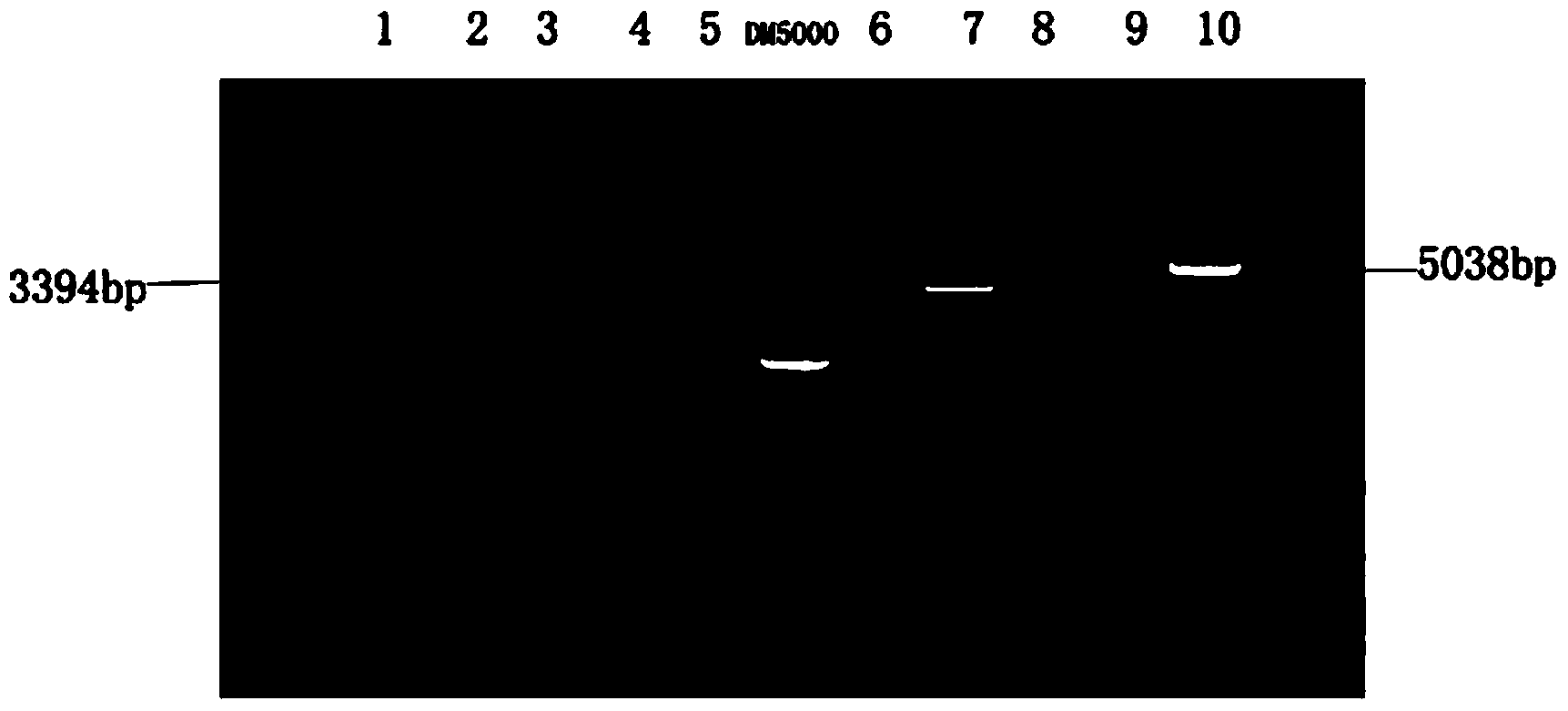Fusion protein with clostridium difficile toxins A/B and encoding gene and application of fusion protein
A Clostridium difficile toxin and fusion protein technology, applied in the direction of anti-bacterial immunoglobulin, DNA/RNA fragments, bacteria, etc., can solve the problems of heavy workload and high difficulty in research and development, and achieve the effect of reducing difficulty and cost
- Summary
- Abstract
- Description
- Claims
- Application Information
AI Technical Summary
Problems solved by technology
Method used
Image
Examples
Embodiment 1
[0033] Example 1 The codon-optimized coding gene sequence is the construction of SEQ ID NO: 1
[0034] like figure 1As shown, the 792bp of the receptor binding region at the carboxy-terminal of toxinA and the 1770bp of the carboxy-terminal of toxinB are connected by a flexible chain of 18 amino acids to form a fusion protein sequence of C-AB, including the following specific steps: Select the Clostridium difficile exotoxin A (ToxinA) gene Carboxy-terminal 972 base sequences (total encoding 324 amino acids), Clostridium difficile exotoxin B (ToxinB) gene carboxy-terminal 1770 base sequences (total encoding 590 amino acids), analyze the coding sequence, find out the influence of gene synthesis The repeat sequence of is shown in SEQ ID NO:6. Simultaneously analyze the sites with different codon usage preferences in this sequence and E. coli, and replace low-frequency codons with high-frequency codons; in addition, on the basis of taking into account the codon preferences of E. ...
Embodiment 2
[0062] Example 2 Prokaryotic expression vector construction
[0063] 1. Construction and identification of prokaryotic expression vector pET32b(+)-toxA-toxB
[0064] 1. Obtaining the target gene fragment: design a set of PCR primers to amplify the nucleotide sequences of Clostridium difficile exotoxin SEQ ID NO:3 and SEQ ID NO:4 of the synthesized pUCE-toxA-toxB, wherein the 5' end is blunt , the 3' end introduces a NruI restriction site. The PCR product purification kit recovers the product after the PCR reaction, and then releases the C. difficile exotoxin A carboxy-terminal and exotoxin B carboxy-terminal gene fragments containing cohesive ends at the 3' end after digestion with NruI. The primer sequences for amplifying the C-terminal gene fragments of Clostridium difficile exotoxin A and exotoxin B are as follows, and the reverse primer is introduced into the NruI restriction site "TCGCGA":
[0065] Forward primer 1: GCCTCTACAGGATATACAAGTA
[0066] Reverse primer 1: GTG...
Embodiment 3
[0072] Expression of the fusion protein of embodiment 3 Clostridium difficile toxin A / B
[0073] 1. Induced expression and identification: The identified pET32b(+)-toxA-toxB plasmid was transformed into E. coli host strain BL21(DE3) by calcium chloride method, and a single colony was randomly selected for expression. That is, a single colony was picked with a sterile pipette tip and cultured overnight at 37°C in LB medium containing 100 μg / ml Amp, with the rotational speed set at 220 rpm. The next morning, inoculate in fresh LB medium at 1:10, culture at 37°C, 220rpm until the OD value is about 0.6, add IPTG to a final concentration of 0.4mM, induce at 22°C, and set the induction time separately For 3h and 8h, samples were taken for 8% SDS-PAGE electrophoresis detection, and the results were as follows: Figure 5 shown in Figure 5 Among them, lanes 1 to 7 are the expression of pET32b(+)-toxA-toxB in BL21(DE3) strain: 1 is 30°C induction for 1 hour, 3 is before induction at ...
PUM
 Login to View More
Login to View More Abstract
Description
Claims
Application Information
 Login to View More
Login to View More - R&D
- Intellectual Property
- Life Sciences
- Materials
- Tech Scout
- Unparalleled Data Quality
- Higher Quality Content
- 60% Fewer Hallucinations
Browse by: Latest US Patents, China's latest patents, Technical Efficacy Thesaurus, Application Domain, Technology Topic, Popular Technical Reports.
© 2025 PatSnap. All rights reserved.Legal|Privacy policy|Modern Slavery Act Transparency Statement|Sitemap|About US| Contact US: help@patsnap.com



